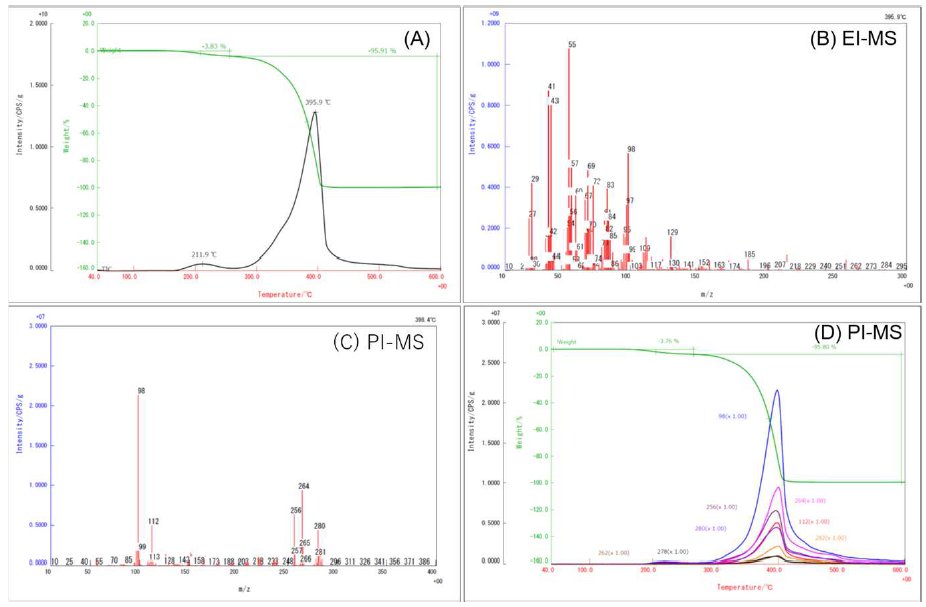Evolved Gas Analysis in Edible Oil by STA-M
Introduction
Thermal analysis is a universal tool commonly used in a wide range of materials for physico-chemical characterization and for evaluating a material’s reaction to a specified set of conditions. Simultaneous thermal analysis (STA) hyphenated with evolved gas analysis is an essential technique relevant to reactions where there are mass losses and a simultaneous evolution of gases for qualitative identification of gases such as in thermal decomposition reactions or oxidative decomposition reactions, etc. In this application, we performed a qualitative analysis of the evolved gases during thermal decomposition of edible oil.
Measurements and results
A 1 mg sample amount of red palm oil was placed in Pt pan and was heated from RT~600℃ at 20℃/min in inert (He) atmosphere. Evolved gases were detected by electron ionization and photoionization mass spectrometry scanning through direct injection in the range of m/z 10-1000.
Figure 1 shows the thermal decomposition behavior of red palm oil by STA-MS. The multiplot of TG and TIC shown in Figure 1A revealed a two-stage mass loss with a 100% mass loss near 550℃. From the TIC curve, the main peaks of gases evolved were detected at 396℃ as shown in the mass spectrum in Figure 1B indicating strong intensities of overlapping fragmentation ions and loss of most molecular ions. On the other hand, the mass spectrum at 398℃ obtained by PI-MS in Figure 1C shows a simple and fragment less mass spectrum detecting molecular ions of oleic acid (m/z 282), linoleic acid (m/z 280), linolenic acid (m/z 278), palmitic acid (m/z 256), 9,17-octadecadienal (m/z 264) confirming the NIST library search result on the mass spectrum of EI-MS. Other low molecular ions were also detected in PI-MS such as m/z 98 and 112 which can be estimated as 2-hexenal and 1-octene. The detection of these ions in inert atmosphere indicate that the red palm oil used could be slightly oxidized.

Figure 1: Evolved gases detected from red palm oil by STA/EI-MS and PI-MS
Reference
(1): E. Choe and D. B. Min. Comprehensive Reviews in Food Science and Food Safety 5 (2006) 169-186

Contact Us
Whether you're interested in getting a quote, want a demo, need technical support, or simply have a question, we're here to help.
